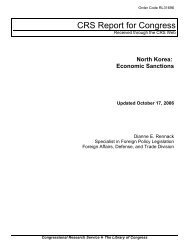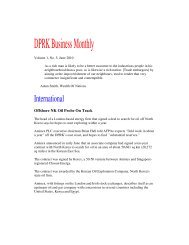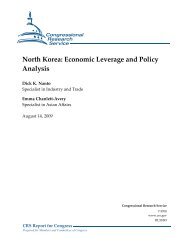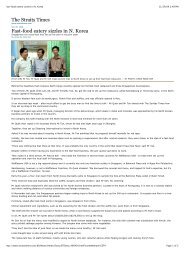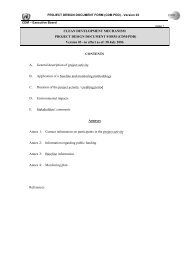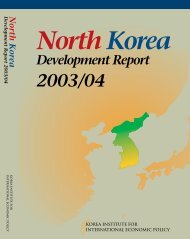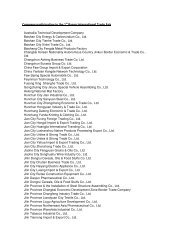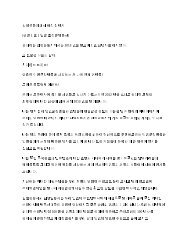North Korean Policy Elites - Defense Technical Information Center
North Korean Policy Elites - Defense Technical Information Center
North Korean Policy Elites - Defense Technical Information Center
Create successful ePaper yourself
Turn your PDF publications into a flip-book with our unique Google optimized e-Paper software.
Warlordism<br />
While the evidence of existing warlords within the <strong>North</strong> <strong>Korean</strong> system is speculative at<br />
best, the possibility for their creation is real. 86 Most likely, they will emerge within Kim Chongil’s<br />
inner core of supporters. As Kim Chong-il continues to isolate his power by narrowing the<br />
channels of communication and transferring lines of authority between bureaucracies, he is not<br />
only causing deep fractures within the leadership, but he also is bringing the security forces into<br />
conflict with each other. These two outcomes have direct consequences for the elite, who see<br />
their access to the Suryong, and the perks associated with that access, threatened. While Kim<br />
Chong-il prefers bureaucratic rivalry as the chief operating principle of his regime, over the long<br />
term, the conflicts that it engenders could result in potentially destabilizing anti-regime outbursts<br />
by demoralized and disenfranchised organizations. This, in turn, could lead to the creation of<br />
warlords, 87 who are able to serve as rallying points for the frustrated elements within the elite.<br />
86 Kim Il-song carried out five purges of the <strong>North</strong> <strong>Korean</strong> military. While he was able to rid the system of warlords,<br />
he did not cut deep enough to rid the regime of their patronage systems. In fact, today, colleagues or descendants<br />
of these vanished warlords exist within the high command. Cho Myong-nok, Yi Tu-Ik, Choe In-tok, Kim Ik-hyon,<br />
Chon Chin-su, Yi Pyong-uk, Kim Yong-yon, and Chon Chae-son were protégés of one or another warlord; while<br />
Kim Il-chol, Kim Yong-chun, Yi Yong-mu, Pak Chae-kyong, Hyon Chol-hae, Won Ung-hui, Kim Myong-kuk, Yi<br />
Myong-su, O Kuk-yol, Kim Tae-sik, O Yong-pang, Kim Ha-kyu, Chang Pong-chun, Yi Chong-san, Pak Ki-so,<br />
Kim Kyok-sik, Yi Yong-hwan, and Chu Sang-song are their descendants. Kim Chong-min, “Kim Chong-il’s New<br />
Ruling Structure and Its Real Power Holders,” Seoul, Pukhan (October 1998) pp. 60-77.<br />
87<br />
Warlords, in this context, refers to individual leaders who have sources of power, independent of Kim Chong-il’s<br />
largess or manipulation, including alliances within the security and military apparatuses.<br />
II-44



